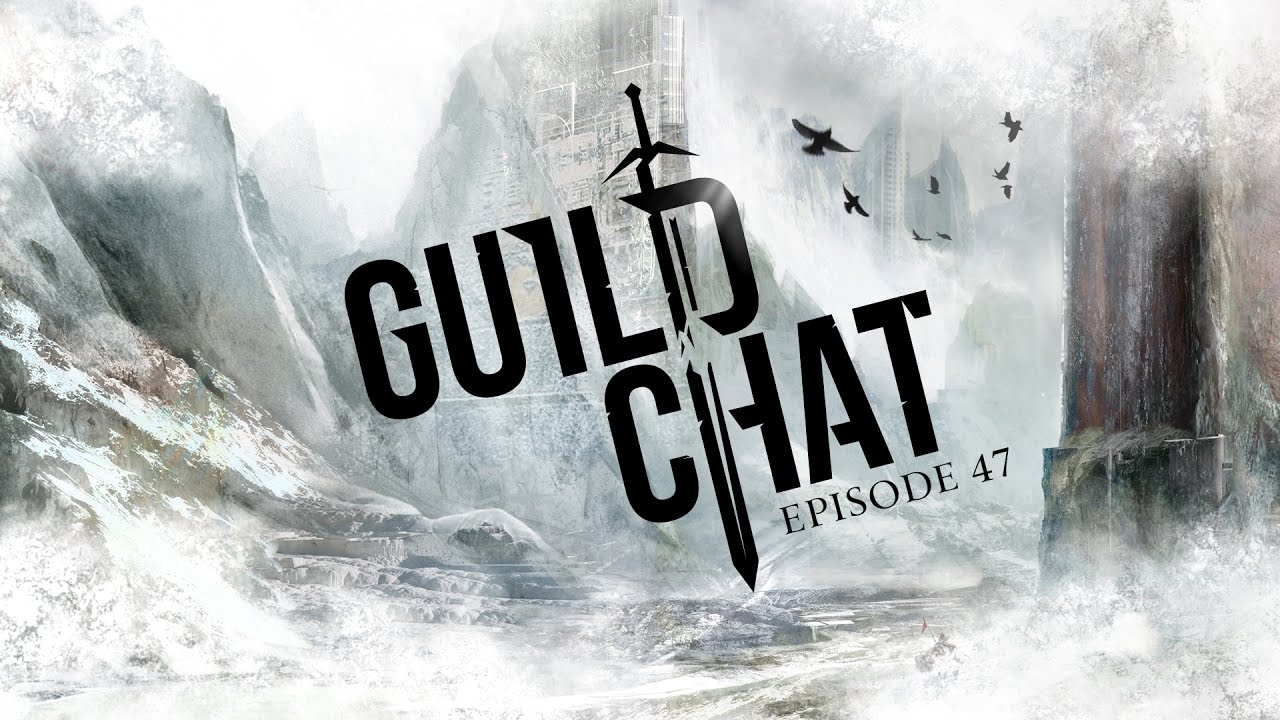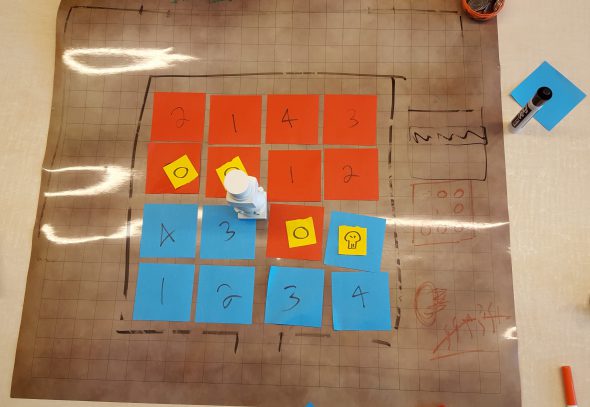Hi, everyone! The raid team was informed that our previous blog on designing and building the Sabetha encounter was pretty popular, so here’s a look at how we created the newest raid, Bastion of the Penitent!
Conceptualizing the Mursaat Overseer
When we looked over the original documentation for this encounter, it became evident to the raid team that we iterate a lot. In the original pitch for Bastion of the Penitent, we wanted to do a giant maze similar to Proxemics Lab in Brisbane Wildlands, and this was the Maze Guardian. It was also originally going to be an event-style encounter like Siege the Stronghold in Forsaken Thicket. Ultimately, we decided a boss was more compelling.
We loosely based the encounter on a game of chess, which was an idea our concept artist Tsveta Komaticheva threw out during a tabletop meeting with the artists. During this meeting, we drew a 4-by-4 grid and explained the mechanics we wanted to build. One of the big mechanics was something we originally called “statue blast,” where along the room’s floor grid would be alcoves containing statues; the statues would light up periodically, shooting a devastating blast attack and killing any players in their path (yes, just like that scene from The Neverending Story).
We put so much emphasis on the grid that Tsveta said it was “like a game of chess”—an angle we hadn’t considered at all—and it helped us nail down the design of the encounter.
Tabletops
We previously mentioned the term “tabletop meeting,” so let’s talk about that. In these meetings, our team gets together to visualize the paper-designed mechanics the designers have in progress, which gives us an opportunity to provide early feedback.
We use dry-erase mats, markers, and an assortment of objects to show the flow of the encounter. Designers draw the boss room and move pieces around on the game board as they explain the mechanics. Then, others pose questions like, “How are you going to solve for X?” or “Would you be okay if players did this instead?”
For example, in their original design, the Claim, Protect, and Dispel skills were part of a transformation controlled by one player. During the tabletop, the feedback was that it would put too much pressure on a single player to control the entire game board. The special action skill was suggested as a solution, which removed the negative effects of losing your main skills and divided what was originally a single player’s role into three roles. It made sense, so we adjusted it before beginning implementation. This type of feedback from peers allows us to fix problems before we even build them.
Here’s a photo of the Mursaat Overseer tabletop in progress. You can see how we used red- and blue-colored sticky notes to simulate players using the Claim skill on the arena’s floor tiles. During this particular iteration, we were explaining how the challenge-mote version works with the hidden sudoku puzzle in the background.
Constraints
All teams need to work within a bunch of constraints. For Bastion of the Penitent, the raid team decided to explore building four large bosses instead of a few smaller ones with events in between. It’s not possible to get more than two large creatures per release due to art resource constraints, so after settling on new models for the final two bosses, we had to figure out what model to use for the Mursaat Overseer.
Since our chess theme was so strong, we wondered if a creature completely devoid of animations would work. Dana MacDonald, one of our prop artists, cobbled together an inanimate model of Lazarus in less than an hour. We then hooked it up and grabbed the art leads to review it. After giving them some context for how the fight worked, they were satisfied with a creature that didn’t animate and we started production on the final version.
Teamwork!
Teamwork is the most important part of how the raid team operates. One of the most challenging aspects of this encounter was communicating the tile attacks, spear attacks, and challenge-mote effects without them covering each other up.
To achieve this, we started at the prop level for the floor tiles. Dana made the plates for the floor, weaving in the Eye of Janthir motif, and chose the color orange to signify when a tile was active. From there, we went to VFX Artist Franco Galletta for the spear attacks. We went back and forth on this to make sure it was obvious when a floor tile was claimed. Since the room no longer had alcoves and statues to create the attacks, we needed an alternative; we tried poison at one point, and then fire, but ultimately settled on spears. This also tied the theme together with Samarog.
Finally, Dana created the effects for the challenge-mote areas. He chose a contrasting blue that could float on top of orange tiles so they’d show through the spear effects without being covered up.
Fun Facts about Bastion of the Penitent!
Over the course of implementation, testing, and iteration, many elements of Bastion of the Penitent have changed from the original design documents.
- The instance was originally themed around a tomb, not a prison.
- One iteration of the tomb idea had an entire room of statues that would come to life, evoking a similar visual to the terra-cotta army of Qin Shi Huang.
- Cairn the Indomitable’s Orbital Sweep was shown as a large, blue stick in early testing. Testers called it the “pool noodle” attack.
- The internal name for the Mursaat Overseer was originally the Corrections Officer. It was eventually shortened to the “Chess Boss.”
- The Mursaat Overseer took twice as long to design compared to other encounters because the designer spent a month leading a boot camp for new hires.
- There are 1,222 spears in the map, for a total of 1.1 million triangles in spears alone!
- There was no cinematic to introduce the shackled prisoner encounter—the cinematics team saw the model and asked us if they could make one.
- The initial concept for the final boss involved players fighting the shackled prisoner, but the team felt it would be more interesting to humanize that character and instead fight the fearsome demon that imprisoned him.
That’s a look at the journey the raid team took to design and build one of the encounters in Bastion of the Penitent. Now, let the salt shake freely!


